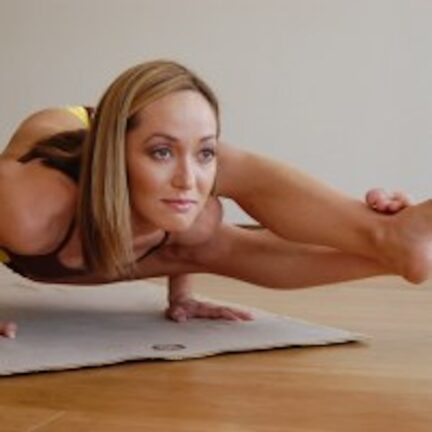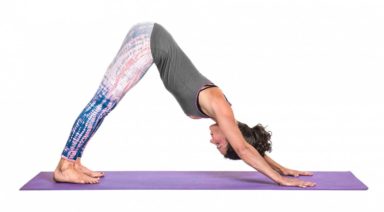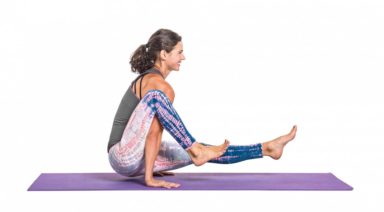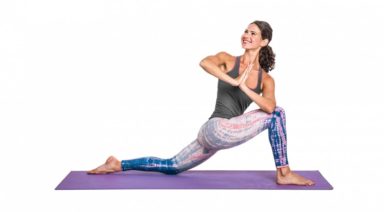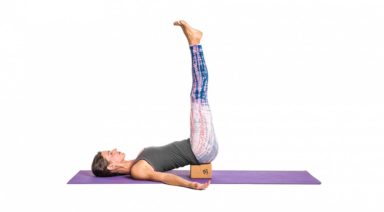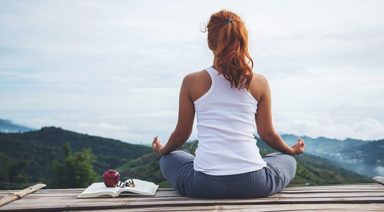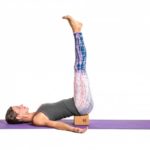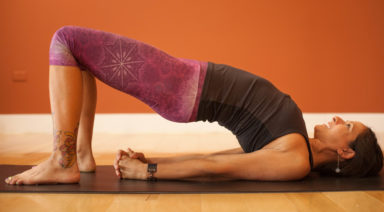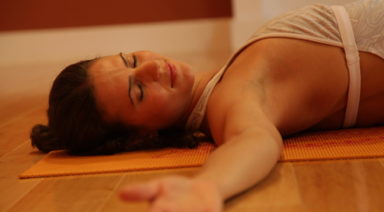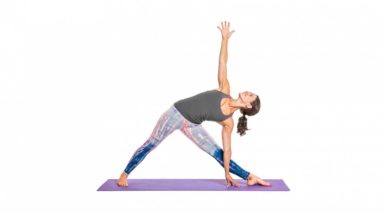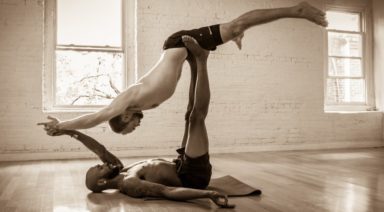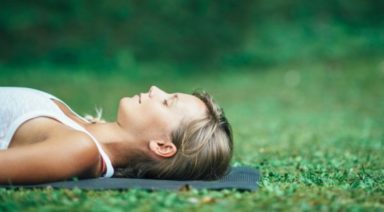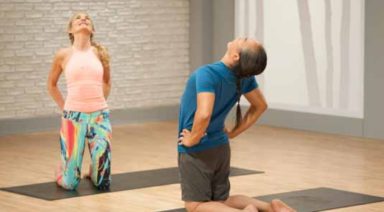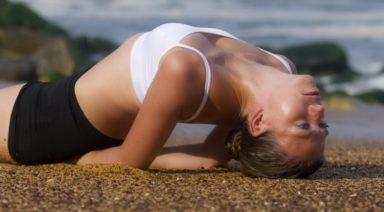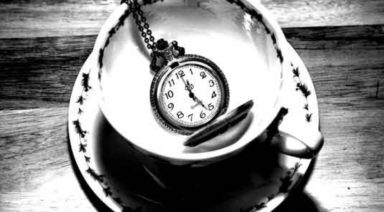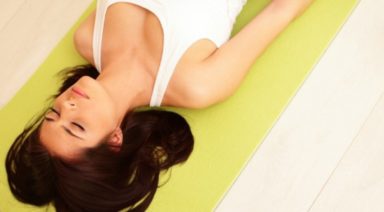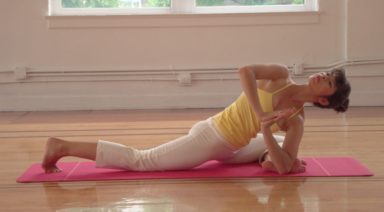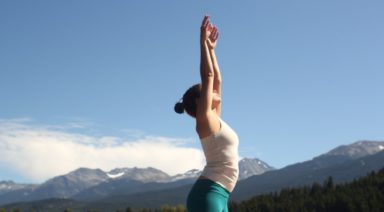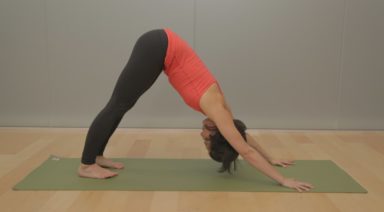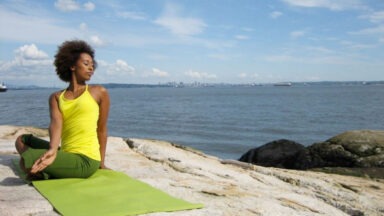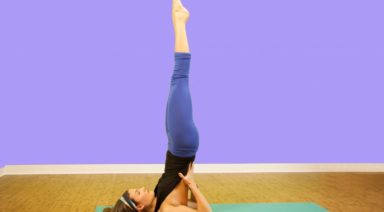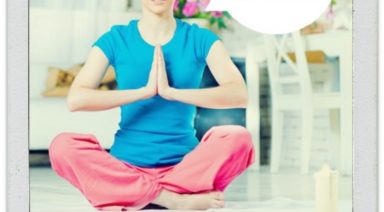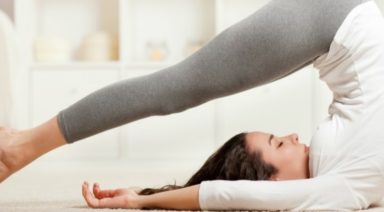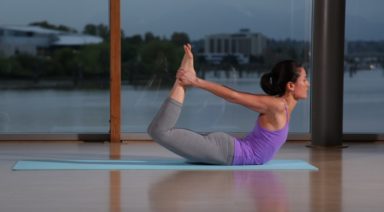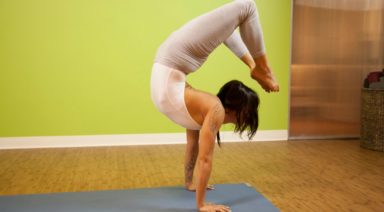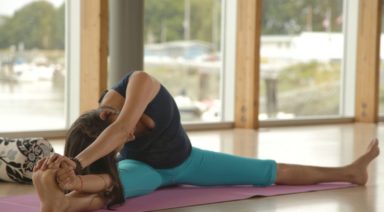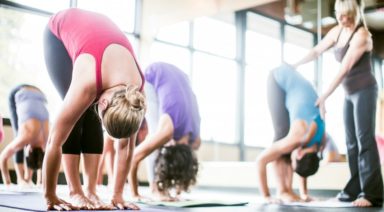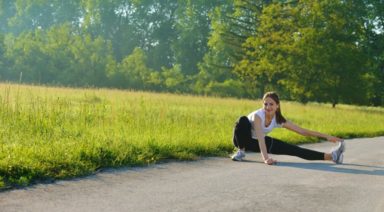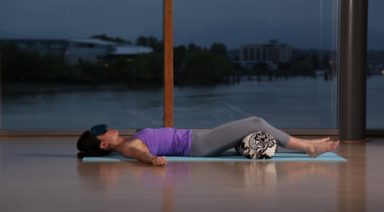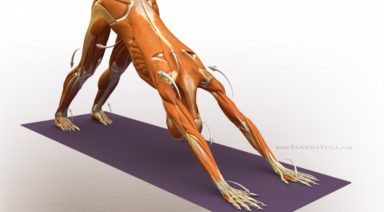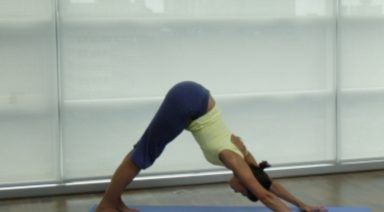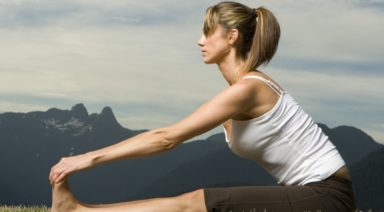Balance for Beginners in Ashtanga Yoga Standing Postures

Balance is first and foremost a state of mind. After the inner calm is established the physical expression of balance in yoga postures appears. If you lose your balanced mind while attempting anything in yoga you defeat the entire purpose of the practice. Even if you manage to squeeze and tense your body into the appearance of balance, if the inner world is not calm then yoga is not happening in a meaningful sense. When attempting any of the standing and balancing postures in the Ashtanga Yoga method remember that balance comes from the inner world first.
The best way to learn balance is through trial and error. Each time you experience your body and yourself out of balance you learn how to better maintain your center of harmony. In the standing postures of Ashtanga Yoga many beginners experience shaking and trembling of the limbs in addition to the feeling of perpetually being out of balance. Rather than being discouraged by this, new students should realize that this is the essence of learning balance. If a student does indeed fall out of a standing posture their body is learning how to maintain balance even more. While many people aim to achieve perfect balance on the first try, the true student is one who is willing to learn balance slowly over many years.
One of the first challenges to your sense of balance is a posture called Ardha Baddha Padmottanasana. This involves balancing on one leg while holding half lotus position and folding forward over the stranding leg. Combining both external rotation of the hip joint with a good understanding of inner balance this posture requires patience, focus and dedication.
Beginners may find that their hip joints are not open enough to stand in half lotus position. If this is the case an easy modification is a simple tree posture.
Tree posture is not actually included in the traditional Ashtanga Yoga method, but it can be used either as modification or preparation for Ardha Baddha Padmottanasana. In order to enter tree transfer the weight of your body onto your left foot. Then externally rotate your right hip joint and bring the right heel as close to the groin as possible.
Point the right knee out to the side and attempt to close the right knee joint fully. Engage your pelvic floor, suck in the lower belly and find your balance deep within your center. If this posture is possible and relatively easy for you, progress to the next level by moving your right foot into half lotus position. If you can balance well and your right knee feels good see if you can reach your right hand around your back to hold onto your right foot. Engage your pelvic floor to maintain the balance.
If your right knee feels good and you have a strong connection to your core, fold forward. If you loose the bind or could not take the bind around your right foot take both of your hands to the floor. After five breaths inhale and lift your chest, exhale as you settle in the posture. Inhale return to standing.
Throughout this movement avoid the temptation to hold on too tightly or force your body. Find the inner balance through a graceful connection to your inner body. When you feel yourself gripping to hard or forcing the movement, relax, stay where you are and just breathe. Over time you will experience balance of the body and mind.
Adho Mukha Svanasana: Downward-Facing Dog Pose
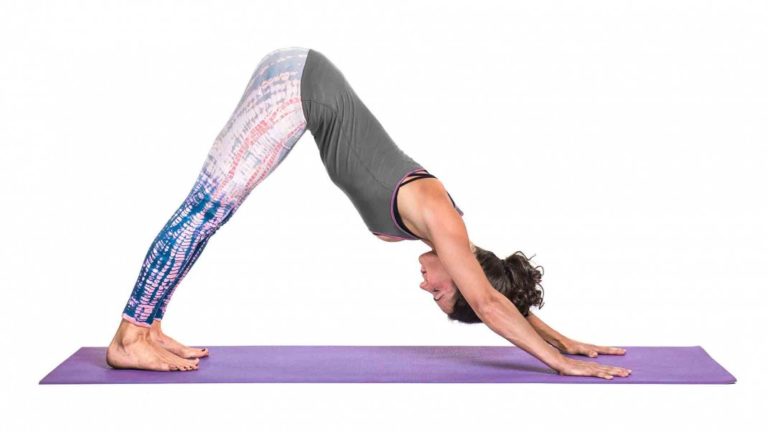
Adho mukha svanasana (AH-doh MOO-kah shvah-NAHS-anna), also known as downward-facing dog pose, is a mild inversion that calms the nervous system and helps relieve stress. During downward-dog, focus on the details of your inhale and exhale to hone your attention. Notice your breath before entering the pose, during the pose, and after leaving the pose.
Sanskrit:
- Adho = downward
- Mukha = face
- Svana = dog
- Asana = pose
Philosophy & Origin:
Adho mukha svanasana is practiced as a free-standing posture or as part of a vinyasa sequence and is used as a “resting” point for stretching the back of the legs and the shoulders.
Tips:
This pose stretches the hamstrings, calves, spine, and muscles in the back. Go slowly and listen to your body’s limits.
Physical Benefits:
- Stretches your hamstrings, calves, feet, and hands.
- Strengthens your arms, shoulders, and back.
- Improves mobility in your digestive system.
- Relieves back pain, headaches, insomnia, and fatigue.
Energetic Benefits:
- Elongates and releases tension from your spine.
- Helps relieve the symptoms of menopause.
Mudra: Apana Mudra
This mudra is also known as the “prayer mudra.”
How to: The tips of the middle and ring finger touch the tip of the thumb. The forefinger and little finger are stretched out and straight.
Benefits:
- Helps move prana energy to the periphery of the body.
- Regulates the excretory system and helps maintain internal chemical homeostasis.
- Aids in waste elimination from the mouth, eyes, ears, nose, throat, etc.
- Regulates diabetes.
- Helps with constipation and urine obstruction.
Mantra:
Om Mani Padme Hum Mantra
As translated by the Dalai Lama, this mantra means “the jewel is in the lotus,” or “praise to the jewel in the lotus.” Many contend that the true meaning of this mantra cannot be translated into a simple phrase or sentence, but all of the teachings reiterate that suffering in life is unnecessary, and through peaceful reflection and calculated action, we can avoid the aspects of our lives that cause suffering and embrace those that bring joy and enhance our daily lives. The lotus is often believed to be symbolic of our ability to rise out of darkness and blossom with beauty, and this recognition of how we rise out of dark conditions is invoked through the power of this mantra.
Preparatory Poses:
- Plank pose | Phalakasana
- Standing forward bend | Uttanasana
Follow-Up Poses:
- Standing forward bend | Uttanasana
- Mountain pose | Tadasana
- Sirsasana | Headstand
Contraindications and Cautions:
Before trying any inversion, check with a doctor before performing the pose if you have any of the following conditions:
- Wrist problems like carpal tunnel syndrome or arthritis
- High blood pressure
- Eye or inner ear infection
- Late-term pregnancy
Adjustments/Modifications:
- Ease pressure on your wrists by placing a wedge under your palms or performing the pose on your forearms (dolphin pose).
- Elevate your hands on blocks or on the seat of a chair to take weight off of your hands, wrists, and shoulders.
- Place your palms on a wall and walk your feet back for a standing variation of downward-facing dog with more control.
Step-By-Step:
- Start on your hands and knees in a table top position with your hands and knees shoulder width apart. Your hands should be slightly in front of your shoulders. Spread your fingers wide on your mat with your middle fingers facing forward. Firmly press your palms flat on your mat.
- Curl your toes under. Exhale slowly as you lift your knees off of the floor and send your hips skyward. Press your chest back toward your thighs.
- Move toward straightening your legs and lowering your heels, but don’t lock out your knees or try to force it.
- Tilt your sitting bones up high and rotate your inner thighs slightly in and up, aware of your low ribs’ tendency to jut out as you find length here. Draw the ribs gently back in by toning your belly.
- Press the pads of your fingers and your full palm into the floor. Straighten but don’t lock out your arms. Engage your upper arm muscles to draw your elbows slightly in and pull your shoulders out of your ears.
- Keep your neck neutral (ears aligned with biceps) with your your gaze looking slightly back toward your feet.
###Legal Disclaimer Before participating in any exercise program or using any fitness products or services that may be described and/or made accessible in or through the Gaia Website and/or the Services, you should consult with a physician or other healthcare provider. Read more about Gaia’s Terms Of Use.

